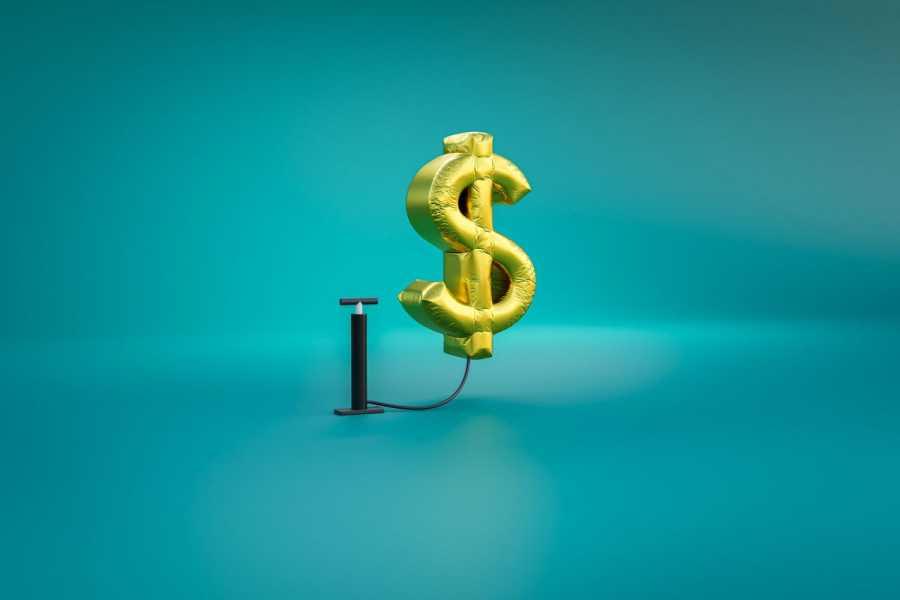What goes up may not come down. Like, ever.

Prices aren’t going up as fast as they were … they’re also aren’t really moving downward. OsakaWayne Studios via Getty Images Emily Stewart covers business and economics for Vox and writes the newsletter The Big Squeeze, examining the ways ordinary people are being squeezed under capitalism. Before joining Vox, she worked for TheStreet.
Life in 2023 means being in a constant state of sticker shock.
You walk out of the grocery store feeling like you’re not really sure what happened, but somehow, your normal fare ran you $50 more than you swear it should have. Did Diet Coke always cost that much? Or eggs? Maybe you’ve been putting off buying that new car in the hope prices go back to where they were pre-pandemic, but you’re starting to feel like the wait is awfully long. Or, the morning after a post-work happy hour, you’re left scratching your head. You swear you had two glasses of wine, but the size of your credit card receipt makes you wonder if it wasn’t four. “How expensive everything is today” is a top theme of conversation. The whole situation can be infuriating.
The root of what’s going on here can feel obvious: blame inflation, which picked up in mid-2021 and throughout 2022. But that isn’t really the issue anymore, at least not at the current rate, because inflation is coming down. The actual problem here is prices.
They’re not going up nearly as much as they were in, say, the middle of last year, but they’re by and large not declining en masse, either. And in most cases, they won’t get back to where they were in the Before Times.
“Inflation in the US is falling relatively quickly compared to all of our other peer countries, and we have the strongest growth out of the recession,” said Felicia Wong, president and CEO of the Roosevelt Institute, a progressive think tank. “But people don’t just want falling inflation numbers, they actually want deflation.”
Higher prices might just be the sort of thing we’ve all got to get used to
Deflation probably isn’t in the cards (and the rub is we don’t want it to be). Higher prices might just be the sort of thing we’ve all got to get used to. The truth is we’re never going back to how things were in 2019 — we won’t be returning to the office at the same levels, we’ll never hear “corona” and only think of beer, and that night on the town is going to cost us more than it did before.
Paying more for stuff is the worst
Two things are true in the United States today: The economy is good, and people hate it. Poll after poll shows that many Americans think the economy is in the gutter and that it’s getting worse. That’s even though the labor market is robust, economic growth is strong, and many people say their personal financial situations are just fine. Not to mention that the recession many economists have been predicting for over a year hasn’t materialized. “Why do people say the economy is bad even when it’s good?” is a question dogging economists, journalists, and the White House, which would very much like to convince people otherwise.
I don’t pretend to have all the answers here, but I think one thing is quite clear: People really do not like paying more for stuff than they used to. That doesn’t mean American consumers aren’t still spending — they are — but they’re mad about it.
In June 2022, consumer prices were up by 9.1 percent from the year before, hitting a 40-year high that summer. In September 2023, they were up by 3.7 percent over the previous 12 months. (The Federal Reserve’s inflation target is 2 percent over the long term.) In other words, prices aren’t going up nearly as fast as they were before, but the cost landscape still stings.
“That surge of inflation really reflected a very high growth of prices,” said Rob Rich, director of the Center for Inflation Research at the Cleveland Fed. “Since the pandemic, and since we started raising interest rates, we’ve actually seen the inflation rate slow. Now … it doesn’t mean that prices have fallen. What it means is prices are not growing as quickly as they were before.”
If you’re looking at 2023 through a pre-pandemic lens, even if not intentionally, the situation feels pretty gross. “People might just be still annoyed that prices are high compared to where they were. Even if prices have stopped going up at the rate that they were, it still sucks if you still are anchored to what things were in 2019,” said Matthew Klein, the founder and publisher of The Overshoot, an economic research service.
The Fed’s interest rate hikes to combat inflation mean higher interest rates for consumers as well, meaning buying a house or a car or just paying your credit card bill is more expensive, too.
Some prices have declined and will likely bounce around and fall, such as for commodities and goods. Lumber prices, which soared in 2021, have settled. The same goes for eggs. Oil prices and many food prices depend on global factors, from weather to geopolitics, that are impossible to control. Airfare prices have fallen, but they’re likely to pick back up again soon.
In many areas where prices have come down, they’re not where they were pre-pandemic. As the Wall Street Journal noted in October, the prices of a number of items, from milk to gasoline to new cars, have declined from their recent peaks but are still above where they were ahead of the outset of the Covid-19 outbreak.
“There’s a couple prices people might track that might decline, and some things might normalize here and there. But, in general, the level of spending in the economy is not going to decrease, and the level of spending supports a level of goods and prices,” said Mike Konczal, director of macroeconomic analysis at the Roosevelt Institute. “That is unlikely to have a huge shift unless people start spending a lot less, at which point, there would be a recession.”
“Episodes where prices actually fall can be really, really damaging to an economy”
Prices tend to be “downwardly rigid,” Konczal added, meaning they tend not to go down (the same goes for wages). On the consumer end, once companies increase a price for, say, shampoo or soda, they don’t often revise them back down. Corporations have been quite open that people are largely hanging with them on price increases over the past couple of years, which has allowed them to hike more. There isn’t much consumers can do about it. Many parts of the economy aren’t competitive in a way that would force companies to price down, and it’s not clear how much corporate greed is at the heart of the issue anyway.
Some prices aren’t going to come down at all, meaning your $7 latte isn’t magically going to be $5 like it was in 2015. (On the positive side, with inflation slowing, it’s probably not going to cost $11 next year, either.) The same goes for aggregate prices on the whole.
“The things that people are very price sensitive about and that they really do think about — the price of gas, food prices, price of cars, the price of housing — is all pretty elevated. Cars and housing in particular saw a big shift up and have not declined very much,” Konczal said.
The situation is frustrating to consumers, but it’s important to note that prices suddenly dropping really isn’t a desired outcome — deflation, meaning a broad decline in prices, is generally viewed as a negative by economists.
“Episodes where prices actually fall can be really, really damaging to an economy,” Rich said. If consumers expect prices to fall further, they hold off on purchasing and pull back on spending, which can hurt businesses and impact hiring. Deflation is also a negative for contracts like mortgages and other debt instruments, he explained, because the amount of money borrowers have to pay is fixed, and if prices are falling, it becomes more of a burden. “While everyone may initially think, ‘Oh, yeah, let’s let prices all fall,’ that can actually be very problematic for an economy.”
Klein noted that deflation in the wake of World War I meant a depression. “Prices did go back down a lot, not all the way back to where they were before World War I,” he said. “But you also had a huge increase in unemployment, and you had a huge decrease in wages.”
There’s a silver lining here that we could feel better about than many of us maybe do
Day-to-day life in America is more expensive than it used to be — and, it’s worth noting, around the globe, because inflation hasn’t been just a US problem. Beyond pandemic-induced inflation, the problem of the cost of big-ticket items — health care, child care, higher education, housing — is far from being solved. There’s no denying the cost of living has gone up and that dealing with inflation is painful and a nuisance. The silver lining here is that many people have gotten a raise between then and now, and that 2019 paycheck isn’t coming back either.
Better pay and even a better job hit differently, psychologically, than inflation
Wage growth lagged inflation throughout much of the past couple of years, meaning that while people were getting more money in their paychecks, it didn’t feel like it because prices were going up so fast. But in 2023, that’s shifted, and wages are outpacing inflation once again. People at the lower end of the income spectrum, in particular, have made big gains on pay.
Better pay and even a better job hit differently, psychologically, than inflation.
One research paper Rich worked on from the Cleveland Fed found that people don’t think their wages will keep up with expected inflation. “If people change their inflation expectations, then what they report to us is they think that for every percentage point that expected inflation goes up, they would only expect a 20 percent commensurate increase in their wages,” he said.
When people do get a raise or find a better-paying job, they often don’t attribute it to forces in the greater economy. They see it as a reflection of their own productivity and merits, their hard work paying off, not of macroeconomic conditions.
Basically, if I get a raise at work, I think it’s because I’m awesome. That may be partly true, but that’s not all that’s going on — it’s also that the labor market is tight and wages broadly are going up. My current employer doesn’t want to lose me, and my future employer would have to pay me a little more to lure me away.
While many people see their employment situations (good or bad) as something they’ve earned, they see inflation as something that’s happening to them and that it’s the government’s fault. “The reality is inflation takes away and it gives back. It takes away, prices go up, and it gives back, wages catch up,” said Justin Wolfers, an economist at the University of Michigan. “But you code what it takes away as inflation’s fault but what it gives back as your own genius.”
Overall, people do just seem angrier at inflation than they are happy about jobs. A recent Blueprint/YouGov poll found that 64 percent of registered voters would most like to see lower prices on goods, services, and gas improved in the economy, compared to 20 percent who wanted higher wages, 9 percent who wanted lower interest rates, and just 7 percent who wanted more jobs.
The rate of inflation really is slowing (and, if all goes well, will continue to do so), and the disorienting nature of what’s happened in the economy over the past few years will likely fade. Post-pandemic prices will eventually feel normal, and post-pandemic wages should make those prices more feasible — or at least not significantly less feasible than they were before. Sooner or later, sticker shock will feel a little less shocking.
Sourse: vox.com






